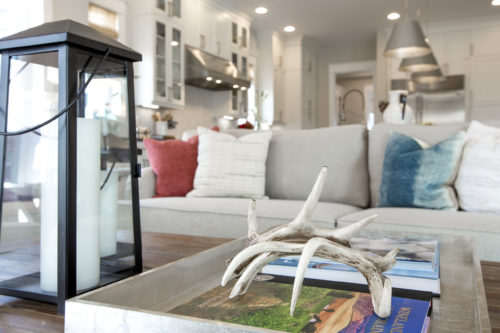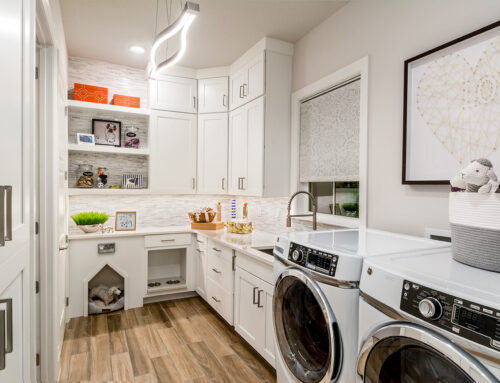From the desk of Lita Dirks
Throughout my career I have been involved in designing and merchandising close to (actually, probably over) a bazillion model homes. And, while I approach every job with a clean slate, designing with the end user in mind, things can get repetitive. However, to be a successful designer/merchandiser I know I must create a unique design that ensures prospective buyers will find that special something. A trigger that will help spark a lifestyle dream. It is about creating a memorable experience. This is especially true when designing multiple models within the same development. To create that lasting impression and the “I must live there” feeling, we employ the Third Layer principle.
The Key to Successful Merchandising
The Third Layer Principle is truly the key to successful model merchandising. This refers to creating the personality of the space. It consists of the little touches that help to pull on the heart strings of the potential buyer. The familiar vignettes that are presented in such a way that remind them of happy moments. We all talk about memory points such as walls of interest, that’s a memory point. However, what a designer or builder sometimes forgets is the deep need for the potential buyer to find “identity” in the environment we present to them.
Identity Elements
These identity elements can be a variety of items. It might be a pet dish or a mug on a side table. Or, an umbrella in a stand or a frame with an “OpArt” design from the ‘60s. Perhaps it’s sheet music on a piano, but not just any sheet music (it must speak to the buyer). Being whimsical, yet not cartoonish is important.
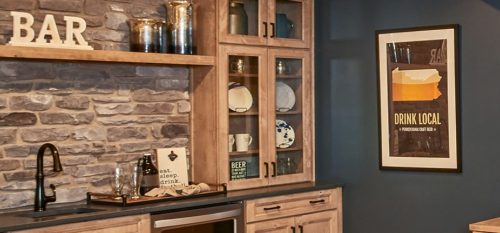
The party room feels more complete with the “local brewery” poster.
For the senior buyer it’s about their desire remain vibrant. They may have had an exciting past and want to continue living an exciting future. Therefore, in these types of models we often include positive memories and present tons of “opportunities” for future adventures. That’s where brochures for travel may come in. Brochures and images of places that they actually could visit, nothing that is completely out of reach. Keep the dream possible.
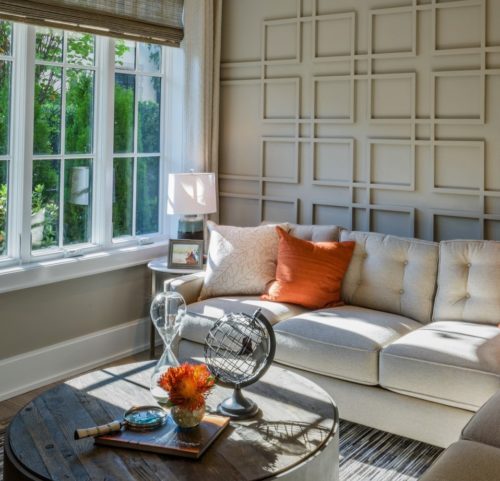
A traveler’s tools are ready to help plan the “next adventure.”
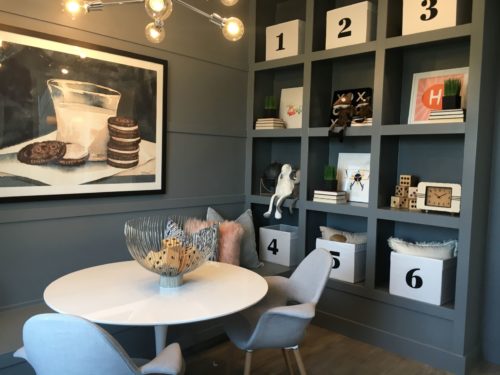
Cookies and milk with the kids (or grand kids)…what could be better?
Conversely, for the millennial buyer, is not about aspirations because they tend to think and live in the moment. Rather we as designers/merchandisers need to ask ourselves what will move them? How can we provide the trigger for them to feel that very moment?

The football fan can see his “happy place” visualized.
Here is where the excess of experiences could be displayed. For example, the hike they did yesterday and the yoga they streamed that morning while their half finished latte sat on the counter. I am not suggesting leaving dirty dishes lying around, rather leave evidence of experiences throughout the model.
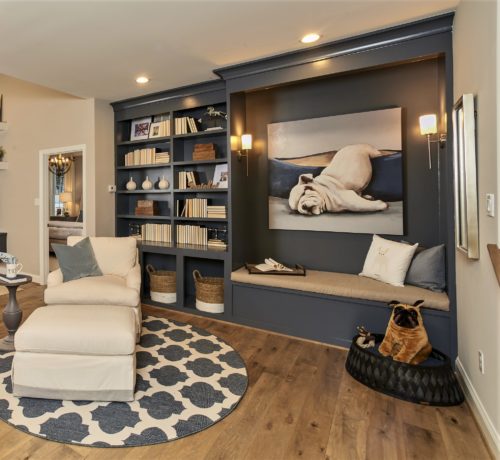
Further, striking the right balance is imperative. Too many elements can be unwanted and too “in your face” thereby turning off a prospective buyer.
Even with the millions and millions (and millions) of models to merchandise, no model home should blur together with another. The Third Layer Principle allows us as designers and merchandisers to create a unique space every time.
To have us employ the Third Layer Principle to help your model homes sell, please contact us today. And, be sure to follow us on Facebook, LinkedIn, and Instagram.

